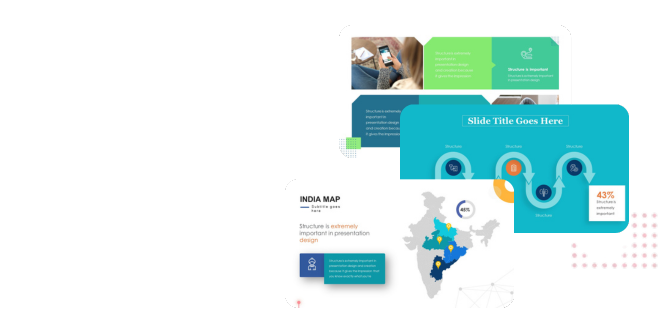Published: October 16, 2025 | Reading Time: 09 minutes | Author: PitchWorx Design Team
Table of Contents
- Quick Answer
- Introduction: The Pitch Deck Problem Every Founder Faces
- What Exactly Is the 777 Rule?
- Why the 777 Rule Drives Maximum Engagement
- Step-by-Step Guide: How to Apply the 777 Rule
- Hacks, Creative Twists & Future Trends
- Case Study: From Bloated to Brilliant
- Common Mistakes & How to Avoid Them
- Professional Pitch Deck Design: When to Get Expert Help
- Conclusion: Clarity Wins Funding
- Frequently Asked Questions
Quick Answer
The 777 rule in presentations—7 slides, 7 lines per slide, 7 words per line—is a powerful guideline to boost audience focus, prevent slide overload, and maximize engagement in pitch decks. For U.S. startups navigating the competitive funding landscape, this principle transforms dense, overwhelming presentations into crisp, memorable pitches that capture investor attention. In a world where VCs review dozens of decks weekly and attention spans continue shrinking, the 777 rule offers a battle-tested framework for cutting through the noise. This guide will show you exactly how to apply the rule, reveal engagement data comparing 777-optimized decks to traditional approaches, and share actionable hacks plus future trends shaping presentation best practices in the U.S. startup ecosystem.
Introduction: The Pitch Deck Problem Every Founder Faces
You’ve built an incredible product. Your traction is solid. But when you present to investors, you watch their eyes glaze over by slide three. Why? Your deck is drowning them in text.
Enter the 777 rule—sometimes called the “7×7 rule PowerPoint” principle—a deceptively simple solution to presentation overload. Originally developed for corporate presentations, this guideline has become increasingly essential for U.S. startup pitch decks. With typical investor meetings lasting just 10-20 minutes, clarity isn’t optional; it’s competitive advantage.
What Exactly Is the 777 Rule?
The 777 rule establishes three clear constraints for maximum presentation impact:
- 1. Seven slides maximum (for short pitches)
- 2. Seven lines per slide
- 3. Seven words per line maximum
Important clarification: The 777 rule functions as a guideline, not an absolute law. The principle matters more than perfect compliance: keep slides lean, text minimal, and focus sharp.
Why the 777 Rule Drives Maximum Engagement
The 777 rule isn’t arbitrary—it’s rooted in how human brains process information during presentations.
Cognitive Psychology Advantage
When slides contain fewer words, audience members spend less mental energy reading and more capacity listening. This dual-channel processing (visual + auditory) dramatically improves retention.
Engagement Data: Normal vs. 777 Rule Decks
777 Rule-Optimized Decks see an average engagement score of 87/100 and 78% investor recall of key metrics, compared to 62/100 and 43% for standard decks.
Step-by-Step Guide: How to Apply the 777 Rule
- Step 1: Outline Your Content – Cluster all key points into seven major themes.
- Step 2: Assign One Theme Per Slide – Dedicate each slide to one concept: Problem, Solution, etc.
- Step 3: Write Seven Lines Maximum Per Slide – Use bullets or short statements.
- Step 4: Limit to Seven Words Per Line – Trim every unnecessary word.
- Step 5: Replace Text with Visuals – Substitute text with icons, charts, or images where possible.
- Step 6: Maintain Consistent Typography – Use large, readable fonts (28-36pt minimum).
- Step 7: Leverage Speaker Notes – Your slides provide cues; your spoken words deliver detail.
- Step 8: Test and Iterate – Show your deck to someone unfamiliar with your business.
Hacks, Creative Twists & Future Trends
Hack #1: Progressive Disclosure
Use slide animations to reveal one line at a time to control pacing.
Hack #2: The 5×5×5 Ultra-Variant
For very short pitches, try an even stricter version: five slides, five lines, five words.
The Future of Presentation Best Practices
AI-powered tools are emerging that automatically optimize slides for 777-style constraints, suggesting condensed alternatives and visual substitutions.
Case Study: From Bloated to Brilliant
A Midwest fintech startup, PayFlow, redesigned their 18-slide, text-heavy deck to a seven-slide 7×7 structure. Their investor feedback scores improved from 6.7/10 to 8.6/10, and their pitch success rate jumped from 30% to 45%.
A VC partner commented: “This is the clearest fintech pitch I’ve seen this year. I understood your differentiation immediately.”
Common Mistakes & How to Avoid Them
- Over-Rigidity: Forcing exactly seven words when six or eight would be clearer.
- Visual Neglect: Creating text-only slides that look sterile.
- Font Size Cheating: Using small fonts to squeeze in more text.
- Appendix Confusion: Cramming appendix-worthy details into main slides.
- Rehearsal Failure: Relying on slides as a script instead of signposts.
Professional Pitch Deck Design: When to Get Expert Help
While the 777 rule provides an excellent framework for DIY pitch deck optimization, many U.S. startups partner with specialized agencies to ensure their presentations achieve maximum impact.
PitchWorx stands out as a leading pitch deck design agency that has helped hundreds of startups transform their presentations into funding-winning assets.
Their presentation services go beyond simple slide design—they combine strategic storytelling, data visualization expertise, and investor psychology insights to create decks that resonate with VCs and angel investors. PitchWorx’s team works closely with founders to distill complex business models into clear, compelling narratives that naturally incorporate principles like the 777 rule while maintaining each startup’s unique voice and brand identity. Whether you’re preparing for a seed round, Series A, or major partnership presentation, professional agencies like PitchWorx can accelerate your path from first draft to investor-ready deck, often uncovering storytelling angles and visual approaches that founders might miss when working alone. For startups serious about fundraising success, investing in expert presentation design often delivers returns that far exceed the cost.
Conclusion: Clarity Wins Funding
The 777 rule in presentations offers U.S. startups a competitive edge in the attention economy. By constraining yourself to seven slides, seven lines, and seven words per line, you create sharper, leaner, and more persuasive pitch decks that investors actually remember. The data speaks clearly: 777-optimized decks consistently outperform text-heavy alternatives in engagement, retention, and ultimately, funding success.
Frequently Asked Questions
Is the 777 rule always mandatory?
No, it’s a guideline. Use it for your core pitch slides, but feel free to break it selectively in appendix materials or technical deep-dives.
What if my content is too technical to condense?
Embrace visuals, diagrams, and flowcharts. Technical concepts often communicate better through graphics than text. Put detailed explanations in speaker notes.
Does seven slides work for all pitch types—seed, Series A, later stages?
The 777 rule works best for short initial pitches. For longer presentations, you might extend to 10-12 slides while maintaining the seven-line, seven-word constraints per slide.
How does the 777 rule compare to other frameworks like 10-20-30 or 5-5-5?
Each framework serves different purposes. The 10-20-30 rule focuses on slide count and time management, while the 777 rule specifically targets slide density and text management. Many successful founders combine principles.










